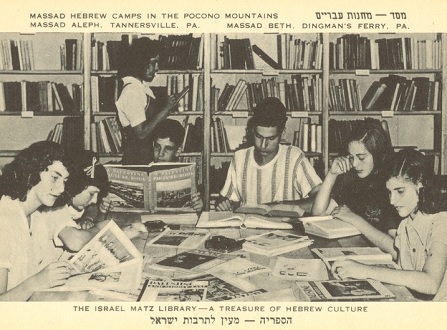Jews in the Americas
North and South American Jewry make up the largest Jewish diaspora in the world, and as they “only” date back some 500 years, these communities can still be considered quite young. There are around 6.5 million Jews in the Americas, constituting about 44% of the Jewish people (the estimated figures are correct for 2020). Aside from the sheer size of the population, American Jewry also holds great significance and influence in the Jewish world, as well as a special connection with the State of Israel.
North and South American Jewry consist of many diverse communities scattered among dozens of countries that differ from each other in many respects. The largest Jewish concentration is in North America, where about 6.1 million Jews live, as compared to 380,000 Jews in South America. The largest community in North America—and in the entire Jewish world outside of Israel—is in the United States, and is estimated at 5.7 million Jews. Other large communities live in Canada (about 390,000), Argentina (about 180,000), Brazil (about 93,000), Mexico (about 40,000), Chile (about 18,000) and Uruguay (about 16,000).
Jews Look to the New World
Jewish settlement on the continent began in the 16th century in Latin America (which includes Mexico and South and Central America). The first settlers were Jews and “conversos” (Jews who converted to Christianity to escape the Inquisition) who arrived after the expulsions from Spain and Portugal. They settled in areas that are parts of modern-day Brazil, Mexico and Cuba, and from there spread to Argentina and other countries. In 1636, the first synagogue in America, Kahal Zur Israel, was established in the city of Recife in Brazil. In 1654, 23 Jews from Recife came to the city of New Amsterdam, later New York, and established Congregation Shearith Israel there, the first Jewish congregation in what would later become the United States. In the ensuing years, Jewish and crypto-Jewish immigrants from Spain and Portugal, the West Indies and Central Europe joined the community. Additional congregations were established, and when the United States declared its independence in 1776, a few thousand Jews were already living in North America.
The next wave of immigration to the “New World” of America came in the mid-19th century: about 200,000 Jews, most of them from Germany, settled in the United States in the hope of bettering their lives. But the huge wave of Jewish immigration to America began a few decades later, in 1880, against the background of economic hardship and antisemitism in Eastern Europe. Over some 40 years, around 2.5 million Jews emigrated from Eastern Europe to the Americas, most of them settling in the United States. Jews from other countries came as well, including many descendants of exiles from Spain, who were attracted to the prospect of a new life in America. Many Jews integrated successfully, becoming prominent members of society and participating in commerce and industry. Still others excelled in the arts, sciences, education and many other fields.
By this point, most of the Jews and converts who had come to Latin America in earlier centuries had assimilated into the local population. Thus, the Jews who immigrated there in the 19th century from around the world formed the new core of the Latin American Jewish congregations.
Since the establishment of the State of Israel, there has been a continuous, slow flow of immigration from the Americas to Israel. For example, in the second decade of the 21st century, about 36,000 Jews emigrated from North America and about 13,000 from Latin America. In 2020, more than 4,000 immigrants from the Americas were absorbed into Israel.




